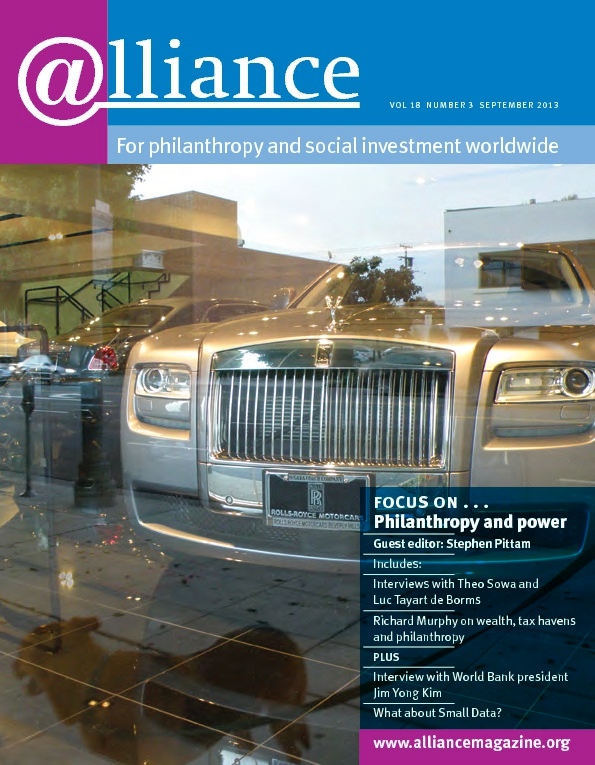As the profile of philanthropy by ultra high net worth individuals (UHNWIs) has increased in recent years, sparked by highly publicized initiatives like the Giving Pledge, it has also generated some scepticism about the motives of these philanthropists and the positive change they will be able to achieve, as Matthew Bishop suggests. As the number of UHNWIs grows worldwide and their actions, influence and results become increasingly scrutinized and debated, the importance of engaging with the communities they aim to serve becomes more vital.
An obvious but often overlooked method to ensure this is to work with community-based organizations. While this can seem daunting, with support it is possible and the rewards are great. Local community-based organizations tend to be highly engaged with local politics and issues, giving them a distinct advantage in avoiding alienation among the communities they look to serve.
The one drawback with local organizations is that their ability to deliver on the scale that UNHWIs are looking for is often limited. To overcome this, we always attempt to gather local organizations around one issue in a specified geographic area. When organizations meet regularly as a community of practice to work together to address a common issue, the sum is greater than the parts. While this may seem obvious, far too often it doesn’t happen.
The other method we recommend for all donors, but UHNWIs in particular, is to approach their overall development portfolio with an investment mindset. Resources should be invested in programmes and implementers that most effectively deliver measurable outcomes over a defined period of time. Results are a fantastic way to counter criticism, and measurable, noticeable results are what all communities are seeking. This is best accomplished when all stakeholders track resource deployment, compare target indicators to benchmarks, evaluate outcomes against realistic targets and maintain accountability and transparency.
Lastly, all investors must be committed to learning from all stakeholders, as well as disseminating knowledge gained. We must remain independent and objective when assessing results. Only then can we learn what worked and what didn’t and adjust accordingly to improve outcomes in the future. Due to the visibility and influence that UHNWIs naturally attract, being transparent about successes and failures can have an outsized impact on the rest of the philanthropic industry, as well as positively shaping their image in the eyes of the public.
Peter Cafferkey
Director, Geneva Global





Comments (0)